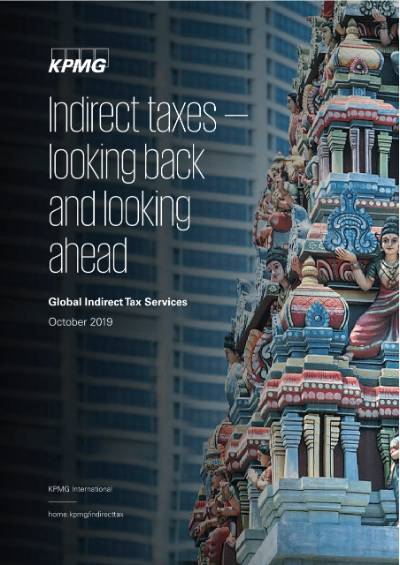For each of the past 8 years, I have had the privilege of writing a published article that takes a forward-looking view of changes to indirect taxes, either in China, regionally in the Asia Pacific, or globally. In many ways, writing this article has provided an invaluable opportunity to lift up one’s perspective from the day-to-day grind; to seek to identify the changes, the trends, and the future directions in indirect taxes; and to steer course and set strategies in that direction. To use an analogy, it’s like an ocean swimmer putting their head down for several strokes while swimming, but every now and then, peering above the waves to check whether or not they are maintaining the best course to the finishing line.
This year is no exception. However, before presenting a futuristic perspective, I thought it would be useful to briefly revisit some of the predictions made back in early 2014 — both to see the extent to which they have proved accurate, and to see if there are any patterns or themes that have emerged over the past 5 years that may provide useful pointers to the future.
A number of the future state propositions are intentionally provocative. They are also designed to challenge ourselves as tax professionals, whether working as advisors, in in-house roles or in policy or tax administration roles, to see how we can do better. The propositions do not represent KPMG’s views or policies on any issues.
I would like to acknowledge and thank the following people for input to this paper — Lennert Janssen, Philippe Stephanny, Gary Harley, Steven Ren.
— by Lachlan Wolfers
Global Head of Indirect Taxes
KPMG International
Footnotes
Throughout this document, “we”, “KPMG”, “us” and “our” refer to the network of independent member firms operating under the KPMG name and affiliated with KPMG International or to one or more of these firms or to KPMG International. KPMG International provides no client services. No member firm has any authority to obligate or bind KPMG International or any other member firm vis-à-vis third parties, nor does KPMG International have any such authority to obligate or bind any member firm.
Conclusion
I welcome the opportunity to be tested on the correctness of these propositions in a further 5 years from now. However, whether they withstand the test of time or not, two of these propositions should start to raise alarm bells with tax professionals. They are propositions 8 (The in-house tax department, and tax advisors, will be disintermediated by tax authorities) and 10 (Unless tax professionals and the organizations they serve transform urgently, they risk falling down the value chain). These should be seen as a call to action to tax professionals to take back control of the data and the processes, and to embark on a transformational journey using technology. Either that, or risk falling down the value curve or being disintermediated by the tax authorities.
In conclusion, if I was to distill these 10 propositions into a single statement, it would be that technology is impacting every aspect of indirect taxes — from why it is attractive for governments as a source of revenue, through to the scope of the tax, how it is collected, administered, and the skills required to carry out the role of a tax professional. When described in this way, there is nothing particularly remarkable or provocative about these propositions since they are merely symptomatic of what we are seeing in terms of the digitalization of the broader economy.
Connect with us
- Find office locations kpmg.findOfficeLocations
- kpmg.emailUs
- Social media @ KPMG kpmg.socialMedia


